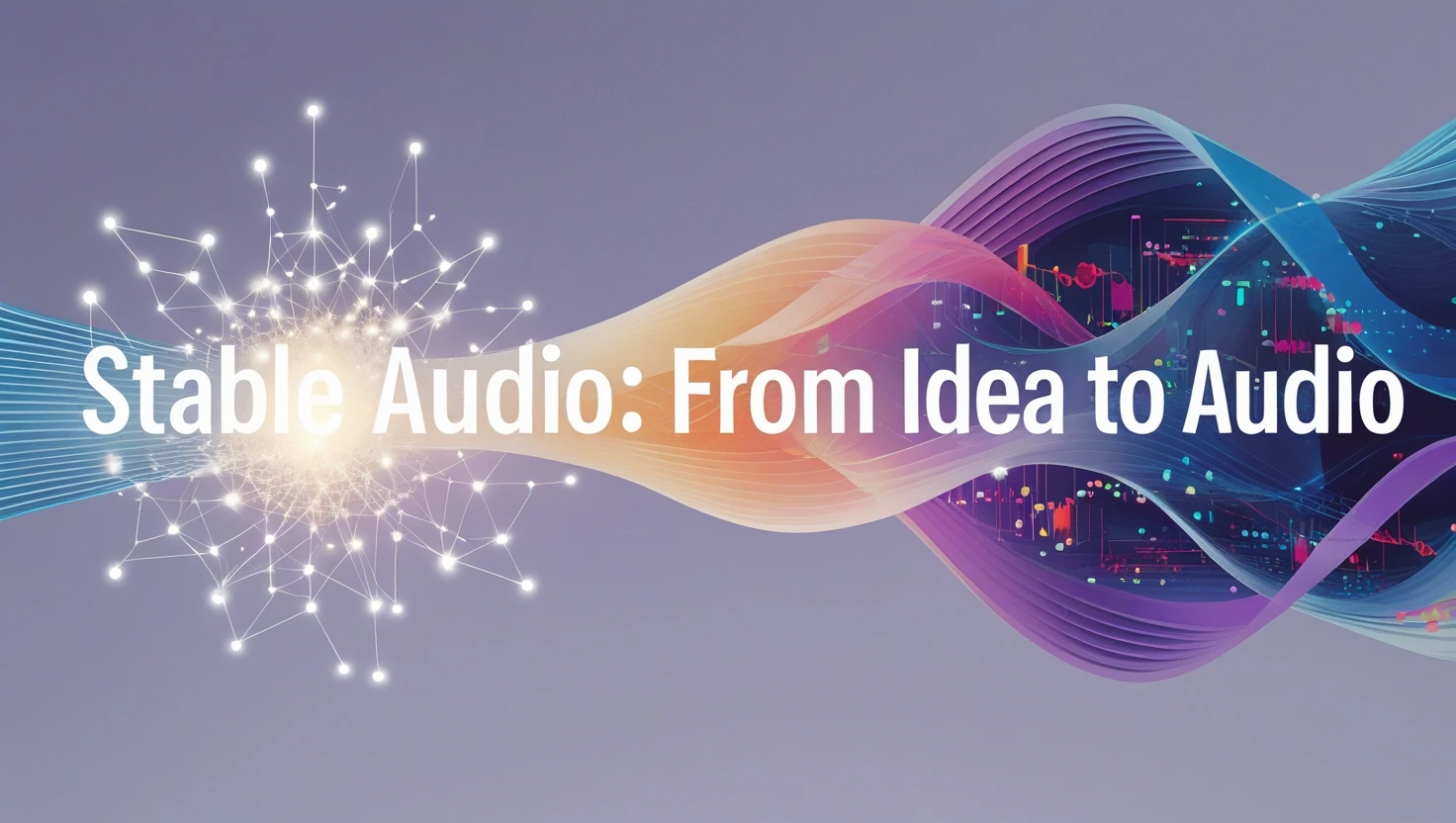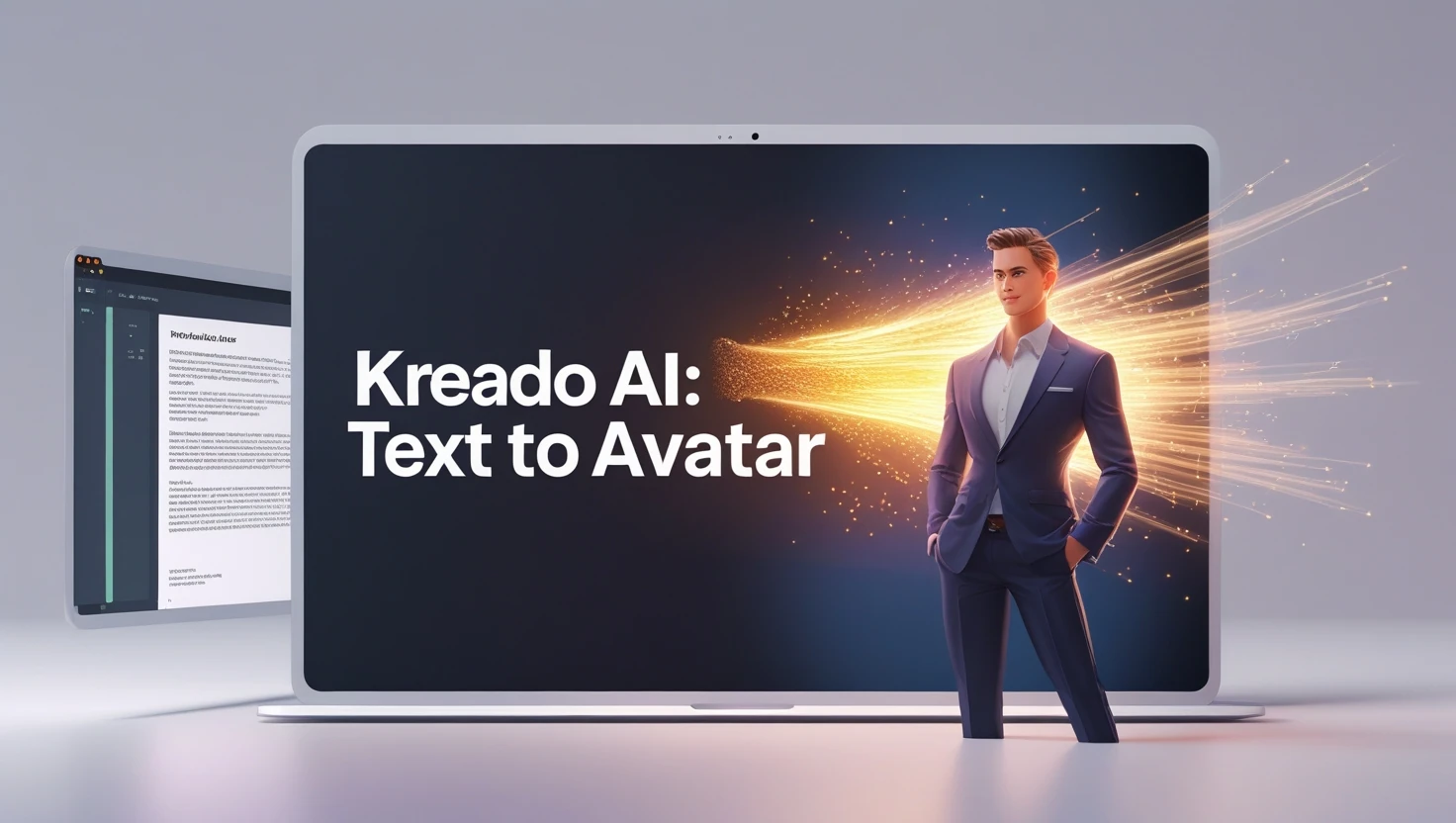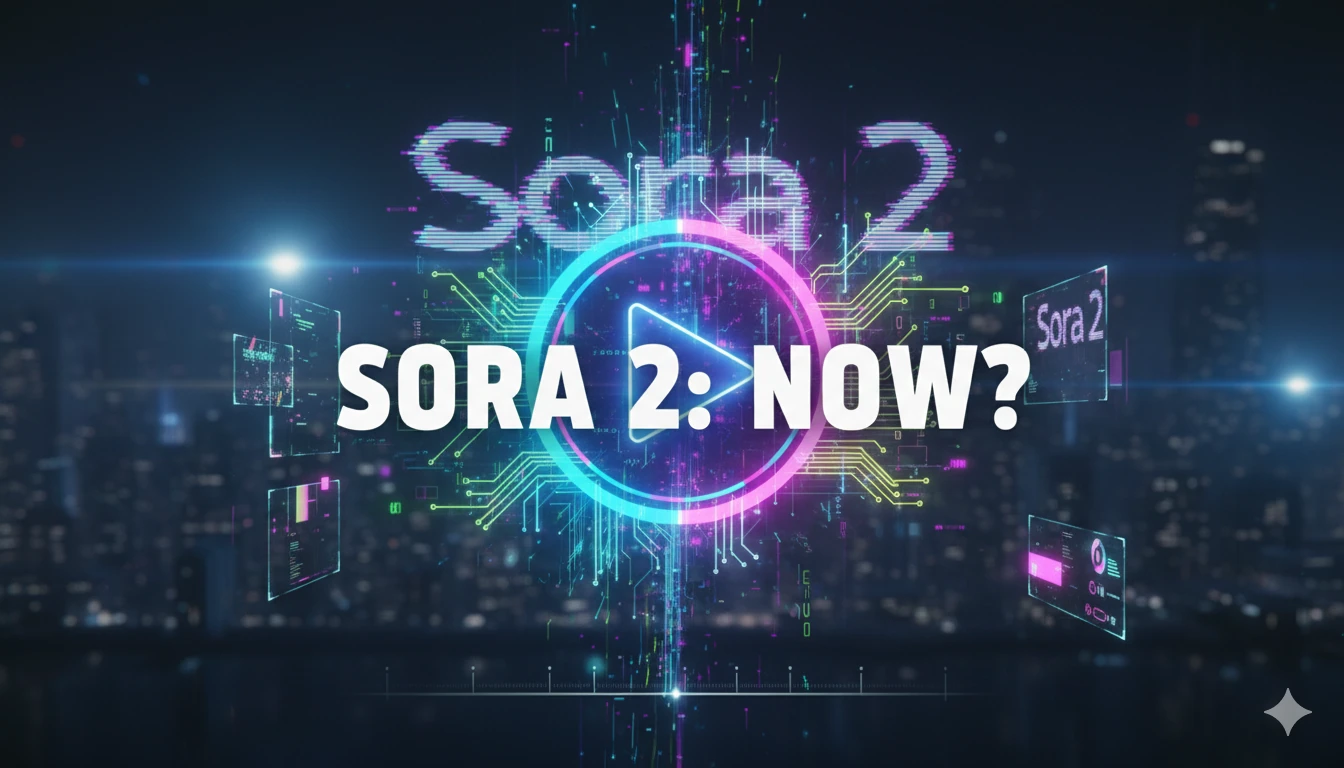Stable Audio: How to Create the Best AI-Generated Music ? from Idea to Audio

Have you ever wondered how you can create amazing music without any musical training? With Stable Audio, you can turn your ideas into high-quality, AI-generated music effortlessly. In this article, I’ll guide you through the steps to create the best AI-generated music using Stable Audio. From understanding its key features to mastering its interface, you’ll learn how to leverage this tool to bring your musical visions to life. Whether you’re a seasoned musician or a complete beginner, Stable Audio offers something for everyone. Let’s dive in and explore how you can start making incredible music from idea to audio with Stable Audio.
Understanding Stable Audio
What is Stable Audio?
Stable Audio is an AI-powered platform for music generation developed by Stability AI. This innovative tool allows users to create music through a variety of methods, leveraging advanced AI models to produce high-quality audio. Some of the key features of Stable Audio include:
Text-to-Audio Generation: Users can generate music by providing textual descriptions. Simply describe the desired mood, genre, instruments, or melody, and Stable Audio translates your vision into an original musical piece.
Audio-to-Audio Transformation: This feature allows users to upload existing audio samples and transform them using natural language prompts. For instance, you can take a simple piano melody and prompt the model to convert it into a powerful rock anthem or a serene soundscape for a meditation app.
Sound Effects Creation: Beyond music, the model can generate a wide range of sound effects, from realistic everyday sounds like footsteps or rain to fantastical elements for video games or movies.
Style Transfer: This tool allows for real-time manipulation of the generated audio’s style during the creation process, helping you match the mood and tone of your project perfectly.
The Evolution of Stable Audio
Stable Audio has gone through several versions, each bringing new improvements and features.
Stable audio 1.0: This was the first version, using diffusion-based models to generate audio. It mainly produced short audio snippets, which were great for quick samples and sound bites.
Stable audio 1.1: The second version made minor improvements over the first. It kept the same feature set but offered better quality and control. This version continued to use the latent diffusion model, making the audio generation process faster and more efficient.
Stable audio 2.0: This version was a big step forward. It allowed users to create full-length musical pieces, up to three minutes and ten seconds long, with clear structures including intros, developments, and outros. A standout feature of 2.0 is the audio-to-audio generation, which lets users transform existing audio samples. This version also introduced a highly compressed autoencoder and a Diffusion Transformer (DiT), replacing the older U-Net architecture. These changes made it possible to handle longer and more complex audio sequences, resulting in higher quality compositions. Additionally, Stable Audio 2.0 was trained on a licensed dataset from AudioSparx, ensuring ethical data use and allowing artists to opt out if they chose.
Getting Started with Stable Audio
Setting Up Your Account
When I signed up, The website guided me through each step, making it easy to get started. Here’s how you can get started:
- Visit the Stable Audio Website: Head over to Stable Audio and click on the “Sign Up” button.
- Choose Your Sign-Up Method: You can sign up using your email address or log in with your Google account for quicker access.
- Fill in Your Details: Enter your name, email address, and create a password. Make sure to agree to the terms and conditions.
- Verify Your Email: Check your email for a verification link from Stable Audio and click on it to verify your account.
- Log In: Once your email is verified, log in to your Stable Audio account.
Subscription Plans
Stable Audio offers four subscription plans to suit different needs:
- Free Plan: Limited to 3 minutes of uploaded audio per month, with each upload cropped to 30 seconds.
- Pro Plan: Offers 30 minutes of uploaded audio per month, with each upload cropped to 3 minutes.
- Studio Plan: Provides 60 minutes of uploaded audio per month, with each upload cropped to 3 minutes.
- Max Plan: Allows for 90 minutes of uploaded audio per month, with each upload cropped to 3 minutes.
Navigating the Interface
When I first navigated through the Stable Audio interface, I found it designed to be user-friendly. Here’s how you can get started with the key components:
Input Panel
The Input Panel offers a straightforward layout:
-
Text Prompt Section: This is where you describe the audio you want to generate. For the first time, I simply chose a prompt from the library. Selecting “Drum Solo” from the Prompt Library provided a great starting point for generating audio. When you try it, feel free to explore other prompts or create your own detailed description.
-
Model Selection: Next, you can choose from various models. The newest model is selected by default, which I found convenient. This ensures you’re using the most up-to-date version of Stable Audio.
-
Input Audio: Then, there’s the section for uploading or recording audio that you want to transform using Stable Audio’s AI. You can add audio files by clicking the “Add audio” button. This step is straightforward and easy to follow.
Preview Panel
After generating the audio, you move to the Preview Panel to listen to it. This panel lets you play your generated audio directly within the interface:
-
Audio Player: The audio player is located at the center, allowing you to listen to the generated track. When I used it, I found it very intuitive and responsive.
-
Quick Actions: You can use the Quick Actions buttons to copy, share, download, or even use the audio as input for new generations. This feature is very convenient and saves a lot of time. I often use these buttons to quickly share my creations or save them for later use.
History Panel
Managing past projects is simple with the History Panel:
-
Accessing Past Creations: In the History Panel, you can see all the audio you have generated or uploaded. This feature allows you to revisit and manage your creations easily. I found it helpful to keep track of all my projects in one place.
-
Organizing Your Work: It’s perfect for keeping your work organized and accessible. You can filter and sort your previous projects to find exactly what you need. This makes it easier to manage multiple projects and stay organized.
Crafting the Perfect Text Prompt
Elements of a Good Text Prompt
When creating music with Stable Audio, crafting the perfect text prompt is crucial. I discovered that a well-structured prompt greatly influences the quality and relevance of the generated music. Here are the essential elements to consider:
- Format: Specify the format you want. For example, “Solo,” “Band,” or “Orchestra.” When I tried different formats, each provided a distinct sound and structure that matched the description perfectly.
- Indicate the genre and sub-genre: to narrow down the style of music. Options include “Rock,” “Pop,” “Hip Hop,” and more. I found that being specific about the genre helped in getting closer to the sound I envisioned.
- Instruments: Mention the instruments you want in your track. Choices like “Piano,” “Drum machine,” “Synthesizer,” etc., can define the core sound. When I specified instruments, the output was tailored to my preferences, making the track feel more personalized.
- Moods: Describe the mood you’re aiming for, such as “Dramatic,” “Inspiring,” or “Uplifting.” I noticed that specifying the mood set the tone of the music effectively, aligning with the emotional impact I wanted to create.
- BPM: Set the tempo by indicating the Beats Per Minute (BPM). Whether you need a slow, medium, or fast tempo, setting the BPM helps ensure the music’s pace matches your needs. I experimented with different BPM settings and observed how they influenced the overall feel of the track.
Examples of Effective Prompts
To give you a clearer idea, here are some detailed examples with specific instructions:
Example 1:
When I used this prompt, the resulting track was a perfect match for a dramatic western scene, complete with tension-building percussion and atmospheric strings.
- “Cinematic, Soundtrack, Wild West, High Noon Shoot Out, Percussion, Whistles, Horses, Action Scene, SFX, Shaker, Guitar, Bass, Timpani, Strings, Tense, Climactic, Atmospheric, Moody.”
Example 2:
This prompt generated a nostalgic synthpop track that was both moody and cool, fitting perfectly for a retro club vibe.
- “Synthpop, Big Reverbed Synthesizer Pad Chords, Driving Gated Drum Machine, Atmospheric, Moody, Nostalgic, Cool, Club, 100 BPM.”
By paying attention to these elements and using detailed prompts, you can significantly enhance the quality and relevance of the music generated by Stable Audio. Whether you’re looking to create a cinematic score or a trendy club hit, a well-crafted prompt is your key to success.
Advanced Features and Techniques
Sound Effects Creation
Stable Audio isn’t just for music creation—it’s also great for generating sound effects for various applications. When I explored this feature, I was amazed by its versatility. Whether you need realistic everyday sounds like footsteps or rain, or more fantastical elements for video games and movies, Stable Audio has you covered.
For realistic sound effects, I tried generating the sound of footsteps. By simply typing “footsteps on gravel” into the text prompt, the AI produced a highly realistic and crisp sound that was perfect for my project. Similarly, when I needed the sound of rain, specifying “heavy rain with thunder” resulted in a vivid and dynamic audio file that brought my scene to life.
Fantastical elements are just as easy to create. For a video game project, I generated sounds like “magical spell casting” and “dragon roaring,” which were rich in detail and had a professional quality. This is where a screenshot could illustrate how you can type different sound effect prompts and get precise results.
Style Transfer
One of the most innovative features I encountered was the style transfer. This allows for real-time manipulation of the audio style to match the mood and tone of your project perfectly. Here’s how you can use it:
When I wanted to transform a simple melody into a jazz improvisation, I uploaded a basic piano track and specified “jazz improvisation” in the text prompt. The AI added jazz elements like swing rhythm and saxophone solos, turning the original piece into a lively jazz number. Here is the basic piano input : The final result was Amazing :
For a film project, I used style transfer to create a dramatic film score from a basic soundscape. I started with a calm, ambient track : then I specified “dramatic orchestral film score” in the prompt. The AI introduced strings, brass, and percussion, transforming the track into a powerful and emotionally charged composition that suited the scene perfectly.
Content Recognition Technology
Stable Audio has integrated content recognition technology through its collaboration with Audible Magic. This partnership ensures that all generated and uploaded audio complies with copyright laws, providing peace of mind for users.
When using Stable Audio, you can confidently generate and upload audio knowing that the system will automatically check for potential copyright issues. Audible Magic’s technology scans the content to identify any copyrighted material. If a match is found, the system alerts you and takes the necessary steps to ensure compliance.
This feature is particularly beneficial for creators who want to avoid unintentional copyright infringements. By leveraging Audible Magic’s robust content recognition capabilities, Stable Audio helps maintain a responsible and ethical approach to audio generation and transformation.
Ensuring compliance with copyright laws is crucial in the creative industry, and Stabilty ai’s integration with Audible Magic exemplifies its commitment to ethical practices. This collaboration not only protects the rights of original artists but also enhances the user experience by allowing creators to focus on their projects without legal concerns. By understanding and utilizing these features, users can ensure their audio projects are both innovative and compliant, fostering a creative environment that respects intellectual property rights.
Future Prospects of AI Music Generation
Evolving AI Capabilities
The future of AI music generation looks incredibly promising, with ongoing advancements that are set to revolutionize the industry. One of the key areas of development is the increased musical complexity and realism. As AI models become more sophisticated, they are able to produce music that is almost indistinguishable from that created by human musicians. When I explored the latest version of Stable Audio, I noticed a significant leap in the quality and intricacy of the generated music compared to earlier versions.
Human-AI collaboration is another exciting prospect. AI tools like Stable Audio can assist musicians in the creative process, providing new ideas and enhancing their creative control. Imagine starting with a simple melody and using AI to build a full orchestral arrangement. This collaboration allows for endless creative possibilities and can elevate the work of musicians to new heights.
Ethical Considerations
As AI-generated music becomes more prevalent, it’s essential to address ethical considerations. One major concern is artistic ownership and the potential for plagiarism. Stable Audio and similar platforms must ensure that the music they generate respects intellectual property rights and does not infringe on the work of human artists. There is also the broader impact on human musicians to consider. While AI can enhance the creative process, it’s important to recognize and value the unique contributions of human artists. AI-generated music should be seen as a tool to support and complement human creativity, rather than replace it.
Democratization of Music Production
One of the most transformative aspects of AI music generation is its potential to democratize music production. Stable Audio makes high-quality music creation accessible to users with various musical backgrounds. Whether you’re a seasoned professional or a complete beginner, the platform provides tools that cater to all skill levels. During my time using Stable Audio, I was struck by how easy it was to create professional-sounding music without the need for expensive equipment or extensive musical training. This accessibility means that anyone with a creative vision can produce high-quality music, breaking down barriers that previously existed in the music production industry.
READ MORE :
- Discover Stable Artisan by Stability AI: Simple Steps to Create Amazing Images and Videos on Discord
- GPT4o Guide : Unlock the Future with the OpenAI’s Latest AI Innovation
Conclusion
Throughout this article, we’ve explored the various aspects of Stable Audio, from its core features and advanced techniques to its ethical considerations and future prospects. Stable Audio stands out as a powerful tool for both novice and experienced musicians, offering a range of features that make music creation accessible and enjoyable. I encourage you to experiment with Stable Audio and discover its potential for yourself. Whether you’re looking to generate unique soundscapes, create professional-quality tracks, or simply explore your musical creativity, Stable Audio provides the tools you need. Ready to start your musical journey? Head over to Stable Audio and begin creating your own AI-generated music today.

